(单词翻译:单击)
10 Cities That Were the New York of Their Time
可与纽约媲美的十大古城
New York City is a world capital in every sense of the word — it’s a cultural and economic powerhouse, and arguably the most influential city on the planet. But it wasn’t always this way, as the following cities once dominated the world around them.
无论以什么标准衡量,用什么眼光来看,纽约城都堪称世界中心。她文化深厚,经济实力强盛,说是地球上最具影响力的城市一点也不夸张。但从前的纽约并不能高居榜首,因为以下十大古城曾傲视群城。
1. Djenne-Djenno
1.杰内(Djenne-Djenno)
In the flood lands of the Niger delta people have been building houses and other structures with clay for centuries. The town of Djenne-Djenno is made entirely out of clay. It was inhabited as far back as 250 BC, and became an important link in the trans-Saharan gold trade. Constructed on hills called “toguere,” the city managed to escape the marshy landscape and annual floods produced by the rainy season. Djenne-Djenno is believed to be one of the earliest settlements in the sub-Saharan region, and is considered by some to be “the typical African City.”
几个世纪以来,在尼日尔三角洲的河滩上,人们一直用粘土建设房屋和其他建筑。杰内古城就是完全由粘土建成的。早在公元前250年,杰内就有人居住了,并成为跨撒哈拉黄金交易的一个重要交通枢纽。建在山上的“摩尔式”房子使得杰内成功摆脱了因雨季而造成的沼泽地形和每年的洪水。杰内被认为是撒哈拉以南地区最早的聚居地之一,更有甚者认为它是个“典型的非洲城市”。
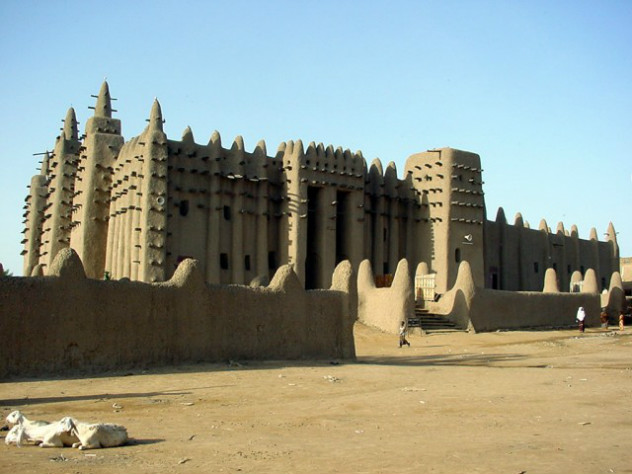
Archeological evidence shows us a continuous human presence in the area up until the 14th century AD, when people moved to the nearby town of Djenne, founded in the 11th century. Further evidence points out that even before the city’s construction, the Bozo people were growing wild rice in the region. In the 13th century AD, with King Koumboro’s conversion to Islam, its palace transformed into a mosque.
考古证据显示,居民于11世纪(杰内城建成后)搬迁到其附近的城镇,并在这里生活繁衍,一直持续到14世纪。进一步的证据则指出,早在城市建成前博若人就已经在此种植野生稻了。公元13世纪,国王Koumboro皈依伊斯兰教,宫殿也随之被改造成一座清真寺。
This mosque stood until 1830, but was rebuilt in 1907 and is the largest mud-brick building in the world. Because clay is easily washed away during the rainy season, the Grand Mosque needs to be maintained. And so each year at the beginning of April, the people of Djenne gather for a local ritual of adding a fresh layer of mud, covering it from top to bottom.
这座清真寺一直支撑到1830年,1907年重建后成为了世界上最大的泥砖建筑。粘土在雨季很容易被冲刷掉,因此大清真寺需要悉心的维护。每年四月初,杰内人就会聚集到一起,从上到下给大清真寺加上一层新的粘土保护层。
2. Sukhothai
2.素可泰(Sukhothai)
Around the 13th century AD, in the area we now know as Thailand, the first Siam Kingdom was formed, and its political and administrative capital was Sukhothai. This is considered to be the first ever Thai state, and under King Ramkhamhaeng the first ever centralized Thai language and alphabet were created. A set of codified laws and a powerful military and administrative organization, all held together by strong Buddhist religious beliefs, have led modern people to consider Ramkhamhaeng “the Founding Father of the Thai Nation.”
约公元13世纪,在现如今的泰国土地上,第一个暹罗国形成了,素可泰就是它的政治行政首都。它是公认的有史以来第一个泰王朝,并且在兰甘亨大帝的统治下首次创建了高度统一的泰文及字母。由深厚的佛教信仰紧紧结合在一起的成文法及强有力的军事行政机构使得兰甘亨大帝被现代人奉为“泰国民族之父”。
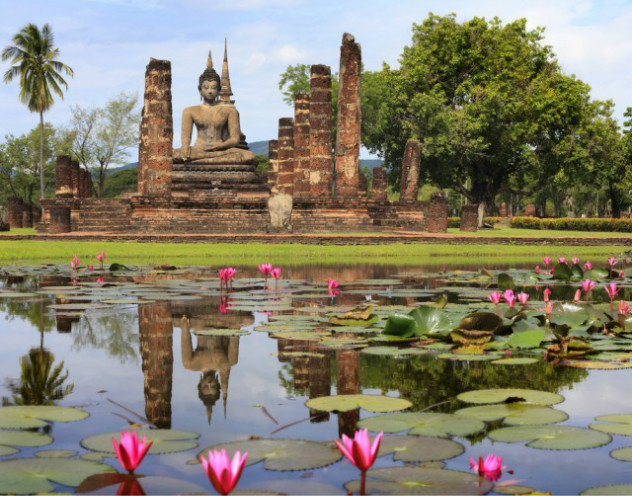
In the city of Sukhothai we see the first evidence of a pure Thai culture and architecture, as well as Thai hydraulic engineering. They managed to build canals, reservoirs and dams to prevent flooding and aid in agriculture, as well as part of the city’s sewer and water provision systems. Sukhothai kings were acknowledged for their ability to seize and control the kingdom’s water.
在素可泰,我们看到了纯泰式文化和泰式建筑以及泰国水利工程的第一证据。他们设法开通运河,修建水库和堤坝,来防治洪水并促进农业发展,同时,这也构成了城市排水及供水系统的一部分。素可泰君王们也因为他们对水的把控力得到了普遍的认可。
With the death of Ramkhamhaeng, the Sukhothai kingdom dissolved as vassal states broke away one by one. The city of Sukhothai fell under Ayutthayan control in 1378 AD, and by 1583 was deserted because of both a powerful earthquake and a Burmese conflict in the area. Sukhothai and other cities were later repopulated, but not to the extent they previously were.
素可泰王朝在兰甘亨逝世后开始由盛转衰,各属国纷纷脱离中央的控制。公元1378年,在那莱大帝的统治下素可泰城开始衰落,到1583年,在大地震以及缅甸冲突的双重作用下,素可泰最终难逃覆灭。虽然后来素可泰等城市又陆续重建了起来,但再也找不回曾经的繁华了。
3. London
3. 伦敦
Paris, Madrid, Amsterdam and Lisbon can all be considered good candidates for a spot on this list, but as far as the race for Empire building goes, London is the winner simply because English is the most widespread language of them all.
巴黎、马德里、阿姆斯特丹和里斯本本都是能上榜的城市,但是就“帝国”这一词而言,只有伦敦能配得上,原因很简单:英语是全世界传播最广的语言。
London was built by the Romans in 50 AD and bears a Celtic name derived from the word “Londinios” meaning “the place of the bold one.” The city had a rocky start, being invaded by the Celts and the Vikings on several occasions. It was abandoned a couple of times, but people managed to find their way back. By the 1800s the population grew to over 950,000.
伦敦是公元前50年罗马人建造的,名字来源于凯尔特词语“Londinios”,意思是“英勇人的家乡”。伦敦刚建立就命途多舛,多次被凯尔特人及维京海盗侵占,也被遗弃过数次,但最终还是重建了起来。并且其人口也在19世纪初增长到了95万多。
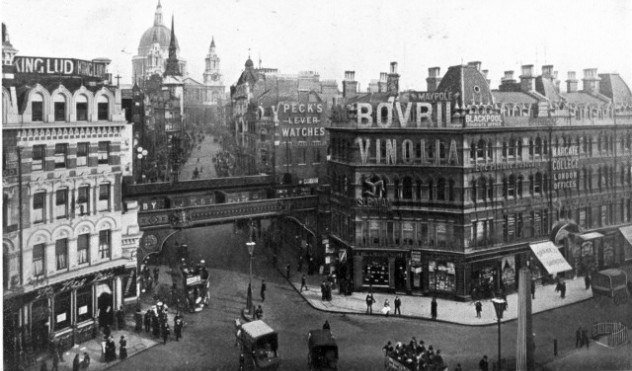
During the expansionist era France, Spain, England, Portugal and the Netherlands were no longer fighting for European territories, but over colonies. Each Empire had its successes and mishaps throughout the centuries, but with the defeat of the Spanish Armada in 1588 and with the French Revolution and later the Napoleonic Wars, England came out ahead. With the help of their colonies and their wealth, London reached a population of six million by the beginning of the 20th century. The influence it exerted on the whole world was enormous. By 1939, at the start of World War II, the population was 8.7 million. Only after the end of the war did the country relinquish most of its colonies and steadily slip from the number one spot in favor of New York City.
在扩张主义时期,法国、西班牙、英国、葡萄牙和荷兰停止了对欧洲领土的争夺,开始为殖民地而战。之后的几个世纪,各个帝国有过辉煌也有过衰败,但是在经历了大战西班牙无敌舰队(1588),法国大革命以及拿破仑战争之后,英国走到了前头。有了殖民地和财富,伦敦的人口也在20世纪初期达到了六百万。伦敦对整个世界的影响是巨大的。1939年,第二次世界大战开始时,伦敦的人口是八百七十万。在战争结束后,英国不得不放弃多数殖民地,伦敦最终也把“第一城”的宝座让给了纽约。
4. Tenochtitlan
4.特诺奇提兰(Tenochtitlan)
Tenochtitlan was the capital city of the Aztec Empire. It was built on an island surrounded by Lake Texcoco deep inside the jungles of Central America. By the time the Spanish Conquistadors were aware of its existence, the population was around 200,000. This was a city very different from what the Europeans were used to. Founded in 1325 AD, the Aztec capital was joined to the mainland by three causeways. It was laid out in straight street grids and encompassed enormous pyramids at its center, which were surrounded by the skulls of the dead and elaborate ceremonial sculptures.
特诺奇提兰曾是阿兹台克帝国(Aztec Empire)的首都。它位于中美洲丛林深处的一个岛上,周围环绕着特斯科科湖(Lake Texcoco)。当时西班牙征服者已经知道它的存在,它的人口大约是20万。特诺奇提兰与欧洲城市大不相同。阿兹台克首都建立在公元前1325年,由三座堤道连接到大陆。城市街道笔直,纵横交错,中心是巨大的金字塔,金字塔周围布满了死人头骨和精心制作的祭祀雕塑。
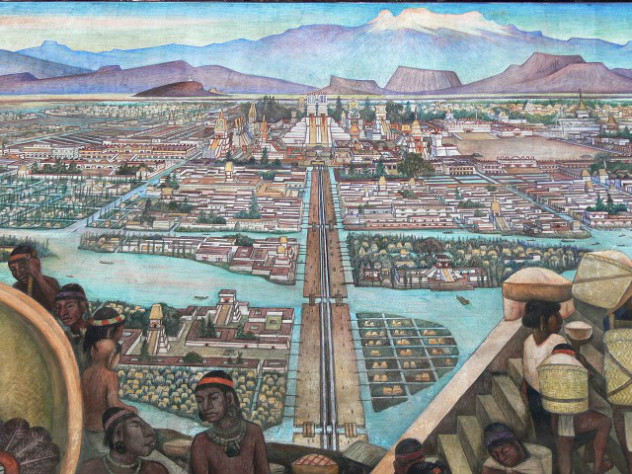
With only a handful of men, Herman Cortez managed to take over the city in 1521. It’s true that they were wielding firearms and had help from other local tribes, but if it hadn’t been for the frenzy of human sacrifice to appease the gods and the scourge of smallpox, it’s likely they would have never succeeded. In any case, the capital city was conquered and razed to the ground by the Spanish, only for them to build present-day Mexico City on the same spot.
1521年,带着寥寥几个士兵,赫尔曼·科尔特斯(Herman Cortez)占领了这座城市。尽管他们火力全开,获得了当地部落的支持,但活人祭祀引起的愤恨以及天花的肆虐却是他们取得胜利的关键因素。无论如何,西班牙人攻占了特诺奇提兰并且将它夷为平地,只是为了在同一地点建立现在的墨西哥城而已。
5. Rome
5.古罗马
Rome was considered by its citizens to be the center of the world. In a time when explorers hadn’t yet discovered the Americas, Australia or the Pacific Ocean, the view of the Earth was much smaller and a lot flatter. The “boot” that is the Italian peninsula, surrounded by the Mediterranean Sea, made the city of Rome look like it was right in the middle of everything.
在罗马居民看来,他们所在的城市就是世界的中心。在探险家们到达美洲、澳洲和太平洋以前,世界在人们眼中确实要狭小且平坦得多。靴子形状的意大利半岛正好位于地中海中央,这也使得罗马看起来更像世界的中心。
Starting off as a small town on the Tiber River, Rome gathered all the skills required to thrive from its neighbors. From the Greeks to the south it received a model of religion and architecture, while the Etruscans to the north offered the gift of trade. This small town steadily flourished into a magnificent metropolis, mostly through the exchange of goods, but the Italian peninsula was soon too small and these neighbors and benefactors had to go.
罗马起源于台伯河畔的小村庄,从临邦学到了各种发家致富的方法。它从希腊等南部地区学会了宗教和建筑,从伊特鲁里亚等北部地区汲取了贸易的精髓。就这样,这个小城邦在贸易中逐渐成长为繁荣的大都市。小小的意大利半岛就无法满足罗马人了,它曾经的邻居和恩人也都变得无足轻重。
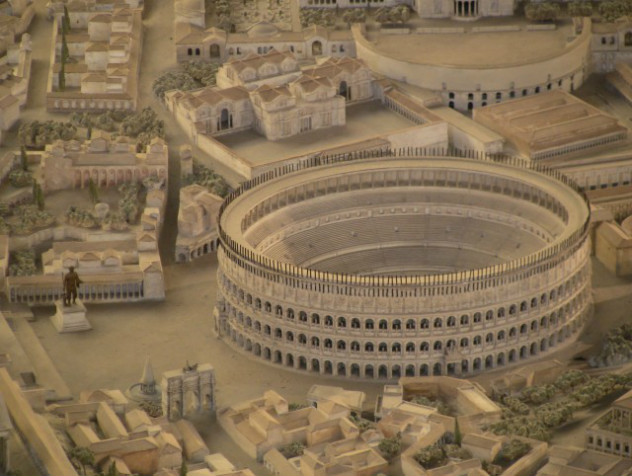
War was the next step into Rome’s evolution, and not long after both the Greeks and Etruscans were gone from the mainland. One after the other, neighboring states fell in the face of this new superpower. The Greeks, Carthaginians, Egyptians, Gauls, the Germanic tribes… all bent the knee to Rome, giving way to the saying “All roads lead to Rome.” But everything has to end eventually, and so did the glory of Rome. But even after 2000 years the lives of people around the world are influenced by this once mighty city.
战争成了罗马发展进程中的下一步,没多久,希腊和伊特鲁里亚都在大陆中消失了。另一方面,附近的城邦在罗马强大的攻势面前纷纷沦陷。古希腊人、迦太基人、古埃及人、高卢人、日耳曼人纷纷向罗马俯首称臣,于是,“条条大路通罗马”这句话也由此产生。但是,一切都会有尽头,罗马亦复如是。不过,即使是2000年后的今天,我们的生活中还是能看到罗马的影子。
6. Carthage
6.迦太基(Carthage)
Legend has it that Carthage was founded by Queen Dido of the Phoenicians. She fled the city of Tyre located in present-day Lebanon in order to escape the wrath of her brother Pygmalion, who was her contestant to the throne. Along with a group of settlers, she traveled a great distance by sea and landed in North Africa, where she met King Iarbas. He offered to give them land in order to build a settlement, but no bigger than the surface covered by the hide of an ox. They cleverly cut the hide into thin strips and were able to enclose a fairly large area of land. On this land, the mighty city of Carthage was built.
相传,腓尼基的黛朵(Dido)女王建立了迦太基城。为了躲避一同竞争皇位的哥哥——庇格玛里翁(Pygmalion)的迫害,她逃离了现在位于黎巴嫩的腓尼基城邦泰尔。经过长途跋涉,她们一行人登陆北非,在那里,他们遇到了柏柏人部落首领马西塔尼求(King Larbas)。然而,他仅同意给他们一块儿牛皮大小的土地。但是聪明的腓尼基人把牛皮切成了许多细条,然后把它们连在一起,圈出了一块儿不小的地皮。后来,他们就这儿在建起了迦太基城。
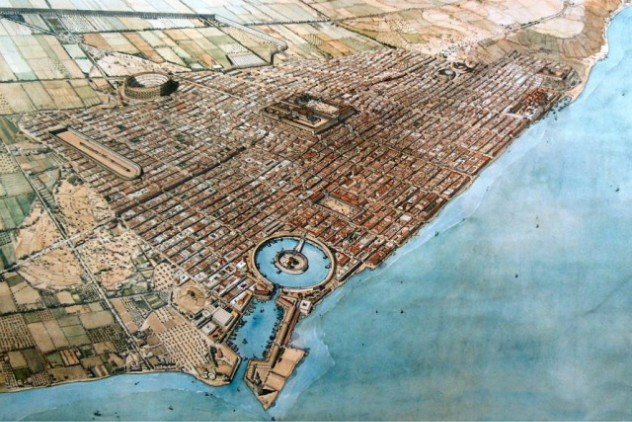
These stories are most likely just that, but the fact that the Phoenicians built the city around 760 BC is true. Located in such a good position — in the middle of the Mediterranean, close to Sicily, Sardinia and Corsica, and a pretty good distance from Egypt — helped make Carthage a leading trade center and military power. The population soon reached half a million citizens and, in order to house them all, buildings were all built five or six stories tall. Carthage was the first city in Antiquity to have a centralized sewage system, linking all buildings within the city walls. The most notable of structures among the ruins was the “Thophet,” which is believed to be an altar for child sacrifice.
相传的故事大致就是这样,但是腓尼基人在公元前706年建造了迦太基城这件事儿的确是事实。迦太基城位于地中海中部,紧邻西西里岛、撒丁岛和科西嘉岛,毗邻古埃及,区位优势造就了其在贸易和军事上的强势地位。城市建立后不久,其人口数量就激增至50万。为了满足住房需求,人们建起了五六层的高楼。迦太基是古代世界第一个拥有统一下水道系统的城市,这些管道把城市里所有建筑连接在一起。在遗址中,最引人注目的是一个名为Thophet的建筑,该建筑很可能是一个生祭儿童的祭坛。
The Carthaginians inevitably encountered the Romans, and soon after that a series of battles known as the Punic Wars took place. Following the loss of Sicily and other territories, Cartage itself came under attack and was ultimately destroyed in 146 BC. Even though the Romans vowed to never rebuild it, Julius Caesar founded the “Colonia Junonia” in 44 BC on the grounds of the old city. In only five years it was named the capital of the African province. Today this city is known as Tunis, the capital of Tunisia, and is home to over two million people.
迦太基人不可避免的受到了罗马人的进攻。很快,他们之间爆发了一系列的战争,历史上称之为布匿战争(the Punic Wars)。在失去西西里岛和其他领土后,迦太基背腹受敌,最终在公元前146年走向灭亡。尽管罗马人通过公投决定不再重建迦太基城,但是尤利乌斯·恺撒还是于公元前44年在这座城的原址上建立了一块凯撒王朝的殖民地。仅仅五年,它就成了非洲城邦的首都。它就是今天的突尼斯首都突尼斯市,一座有着超过两百万居民的城市。
7. Persepolis
7. 波斯波利斯(Persepolis)
Built some 2500 years ago by King Darius the Great, Persepolis was known as “the richest city under the sun” and the capital of the Achaemenid Empire. Founded by a nomadic branch of the Indo-European family who settled the Iranian plateau, no empire before it had ever been as large. It stretched all the way from the borders of present day India to Greece, Egypt and Russia. Regarded as “the King of Kings,” Darius the Great ruled over 28 other kingdoms within his realm, and together with his successors were quite tolerant and accepting of different cultures and religions.
波斯波利斯,约2500年前由国王大流士(King Darius the Great)大帝建造,是阿契美尼德王朝的都城,被世人称为“天底下最富有的城市”。波斯波利斯是当时最大的王国,起源于定居伊朗高原的印欧语系的游牧民族分支,它从现今的印度一路延伸到希腊,埃及和俄罗斯的边界。大流士大帝,被称为“王中之王”,统治了28个王国,连同他的继任者也都是相当宽容,接受不同的文化和宗教。
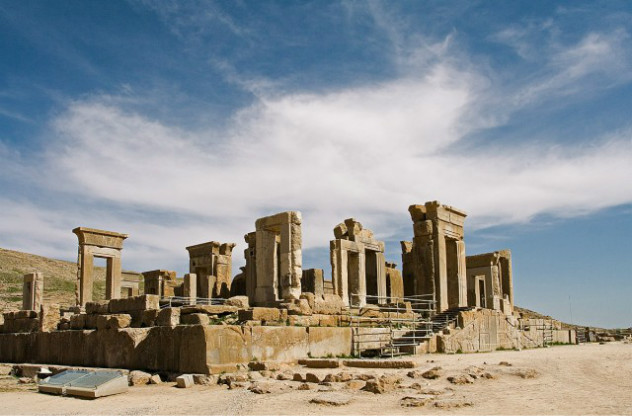
The city of Persepolis currently lies in ruins, pillaged and burnt down by Alexander the Great in 330 BC, but back in its heyday this metropolis was like no other. The Apadana, the centerpiece of the entire palace complex, was the chamber in which the emperor received envoys and ambassadors from all corners of his realm. This structure alone had over 72 columns 82 feet high, which held together the beautifully adorned rooftop. Before entering this forest-like chamber, foreigners first had to pass the “Gate of All Nations” which was guarded on both sides by huge stone bull-bodied bearded men representing the might of the Empire.
波斯波利斯这座城市如今已成了一片废墟,公元前330年被亚历山大大帝掠夺并烧毁,但在其鼎盛时期这个大都市远比其他城市繁荣富足。阿婆陀那大殿(Apadana),是波斯波利斯的正殿,也是整个宫殿建筑群的核心,它是帝王用来接见朝贡团的地方。单这一座大殿里,82英尺高的石柱就不止72根,硕大的石柱撑起了华丽的屋顶。在进入这片森林般的宫殿之前,外国使者首先必须通过“万国之门”,此门由身壮如牛,胡子浓郁的侍卫把守两边,象征着帝国的巨大威力。
The majority of buildings we can still see at Persepolis are the work of Emperor Xerxes, the son of Darius, and his son Artaxerxes I. Some still argue that the defeat of the Persians in 490-480BC by the city-states of Greece wasn’t a good thing, since the Persians had a much more open society. They offered freedom of religion for all cultures within their domain, while their own religion, Zoroastrianism, forbid the practice of slavery. Not to mention the fact that women had many more rights and liberties than most world cultures at the time, especially compared to the Greeks.
我们今天能看到的波斯波利斯的多数残垣断壁,都是大流士大帝的儿子薛西斯国王(Emperor Xerxes)和薛西斯的儿子亚达薛西一世(Artaxerxes I.)建造的。有些人仍然认为,公元前490-480年波斯人在希腊城邦的失利不是一件好事,因为波斯人有一个更加开放的社会。他们在领域范围内提倡宗教自由,而且他们自己的宗教——琐罗亚斯德教(Zoroastrianism)一直禁止奴隶制。与此同时,当时的波斯妇女相较于其他大多数文明(尤其是希腊文明)来说,有更多的权利和自由。
8. Palmyra
8.巴尔米拉(Palmyra)
Trade has always been a great source of wealth and knowledge for human civilization. Cities like Palmyra (“place of palms”), situated in the desert of present day Syria, are perfect examples. Built by the Romans when they seized control of the region in the first century AD, Palmyra acted as a central hub for trade within the Silk Road network.
贸易一直是人类文明的遗产和知识的主要来源。像巴尔米拉(Palmyra又译:帕尔米拉Place of palms:棕榈树之城)这样坐落在沙漠里的城市(如今的叙利亚所在地),就是完美的例证。公元1世纪,罗马人控制这片地区的时候建立了巴尔米拉,那时的巴尔米拉是古丝绸之路上最繁荣、最有文化底蕴的一座绿洲城市,也是地中海地区和古代东方的贸易中转站。
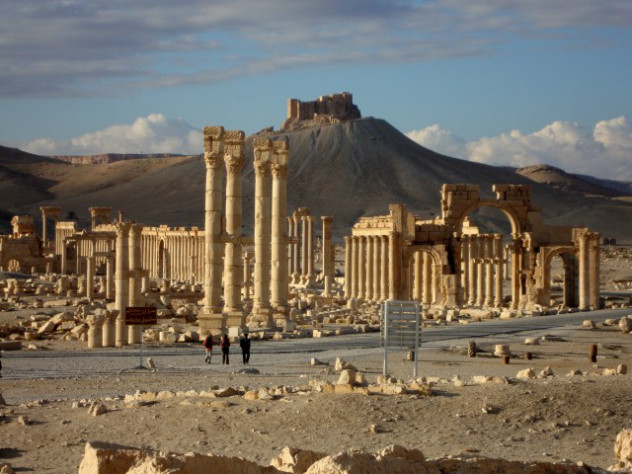
All goods coming to the West from China and India went through this city, which charged the traders as much as 25% for this privilege. Palmyra offered in return security, water, food, shelter and shade for travelers who were happy to pay to have access. Its design and architecture show the mercantile nature of the city — by connecting the Temple of Ba’al, Diocletian’s Camp, the Theater and the Agora with colonnaded streets some 1100 meters long, shade was provided for all sorts of traders and craftsmen.
所有中国和印度的商品要运输到西方都必须经过巴尔米拉,于是巴尔米拉便收取贸易者25%的中转费。当然,作为回报,巴尔米拉也会替支付中转费的商队保护货物的安全,为商队提供水,食物,暂住居所以及乘凉的荫蔽。这座城市的设计和建筑也彰显了它的商业性质——用大概1100米长的廊柱街道连接起巴力寺(Temple of Ba’al),戴克里先营(Diocletian’s Camp),剧院和集市,为来往的商人和工匠们提供荫蔽。
Palmyra had been a semi-independent city state influenced by Roman rule. When the city’s ruler, Odaenathus, was assassinated, his wife Zenobia came to power. Under her dominion, the city began to expand its rule throughout the Middle East, triggering a conflict with Rome. After Zenobia’s defeat and capture in 272 AD, she was paraded in golden shackles by Emperor Aurelian through the city of Rome, while Palmyra was sacked and never truly recovered.
巴尔米拉曾是罗马帝国统治下的一个享有自治权的城市。巴尔米拉的统治者,奥登纳图斯(Odaenathus)被暗杀后,他的妻子塞诺维娅(Zenobia)掌权。在她的带领下,巴尔米拉开始拓展在整个中东地区的统治,从而引发了与罗马的冲突。塞诺维娅战败并于公元272年被捕,她被皇帝奥勒利安(Aurelian)用金锁链铐着在罗马城中游行,从此巴尔米拉就被遗弃了,并且再也不复往日的繁荣。
9. Constantinople
9.君士坦丁堡(Constantinople)
After the split of the Roman Empire into two, the city of Rome gradually lost almost all of its former glory. In 330 AD, Emperor Constantine moved the seat of power from Rome to the small town of Byzantium and then transformed it into Constantinople. The capital of the Byzantine Empire for over 1000 years, this mighty city became the wealthiest and most influential metropolis in Europe.
罗马帝国一分为二后,罗马城逐渐丧失昔日光环。公元330年,君士坦丁一世把王座由罗马移到小镇拜占庭,后来移至君士坦丁堡。拜占庭帝都有超过1000年的历史,是欧洲最富裕,最具影响力的大城市。
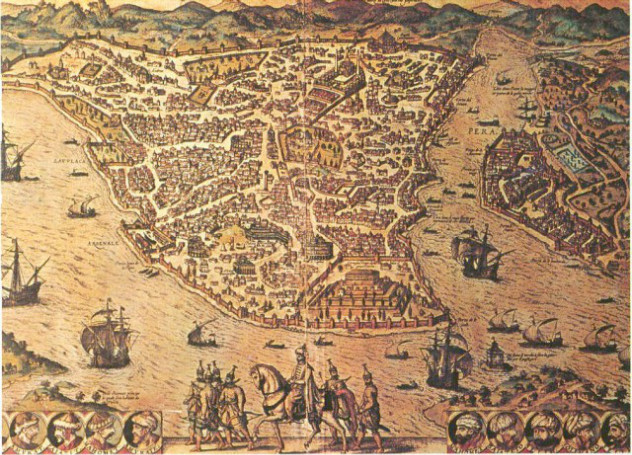
It had the largest walls the continent had ever seen, the Theodosian Walls, sparing the city from many attacks across the centuries. The imposing cathedral of Hagia Sophia, built by Emperor Justinian I in 537 AD, was one of the Wonders of Late Antiquity, and the Hippodrome, where horse races were held, surpassed even the Coliseum of Rome.
帝都拥有欧洲大陆最雄伟城墙——特奥多修斯墙,几个世纪以来成功阻挡多次进攻。雄伟的圣菲亚大教堂(由东罗马帝国君主渣士丁尼一世于公元537年修建)是古代奇迹之一。罗马斗兽场(可举行赛马)的规模甚至超过罗马大剧院。
Situated on the strait of Bosphorus, which seperates the Mediterranean from the Black Sea and Europe from Asia, Constantinople helped, among other things, turn future European empires into world dominating forces. Not even after the fall of the Byzantines in 1453 did the city lose its power; it simply changed its name to Istanbul under the new rule
君士坦丁堡濒临博斯普鲁斯海峡,将地中海和黑海分开,并把欧洲和亚洲隔开。后来的欧洲列强成为世界主导力量,与君士坦丁堡(当然也有其他因素)是分不开的。直到1453年,拜占庭衰落,帝都也失去了影响力。帝都更名为伊斯坦布尔,受奥斯曼土耳其人统治。
10. Vijayanagara
10.毗奢耶那伽罗王朝(Vijayanagara)“胜利城”
The city of Vijayanagara (“the city of victory”), located in Southern India, was the capital of an empire by the same name. This empire held power in the 14th to 17th centuries and covered much of the Indian subcontinent. Its existence is due to the power vacuum left behind by the Delhi Sultans, who wreaked havoc and then abandoned the region. Using the threat of encroaching Muslims as an incentive to bring all the Hindu people together, the first Vijayanagaran rulers managed to create an empire capable of holding rival Sultanates in check.
毗奢耶那伽罗城(“胜利城”),坐落于印度南部,是毗奢耶那伽罗王朝的首都。14世纪到17世纪,毗奢耶那伽罗王朝执政,其权利延伸到印度次大陆大部分地区。此王朝的建立,源于德里苏丹国(the Delhi Sultans)留下的权力真空期。德里苏丹国的统治造成浩劫后,君主主动放弃此领域统治权。而毗奢耶那伽罗王朝首位统治者,为了制约苏丹国,不惜以残害穆斯林为代价,来团结所有印度教信徒。
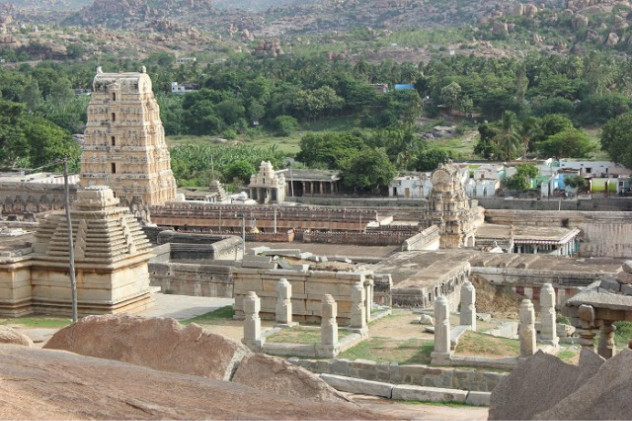
The capital of the empire, as described by Dr. George Michell, “Was perhaps the most complete example of an imperial city… situated in one of the most extraordinary landscapes to be found in Asia, not just in India…” A granitic landscape through which the Tungabhadra River flows allowed the people to build irrigation canals, while at the same time offering natural protection from surprise invasions. The region also holds tremendous religious importance for the locals.
乔治·米歇尔博士笔下的王朝首都是这样的,“毗奢耶那伽罗城可能是保存最完整的古都……地理位置得天独厚——在印度如此,在整个亚洲也如此……”栋格珀德拉河(Tungabhadra)河水流经坚硬的花岗岩大地,流域两岸人民修建起运河,不仅用于灌溉,还具有防护自然灾害功能。在该区域,宗教信仰对当地人民来说至关重要。
Eyewitness accounts, provided to us by Persian and European visitors, paint a picture of life in Vijayanagara as well as the magnificence of the local Maha Navami festival. Among the lavish palaces and temples, archeologists have found the remnants of army garrisons and elephant stables. With the major defeat of its army in 1565 AD at the hands of the Muslims, the city was abandoned and burned to the ground. Unlike most Indian settlements, Vijayanagara was never repopulated, despite multiple attempts to do so.
根据波斯和欧洲游客描述,我们画了一幅毗奢耶那伽罗民生图,和当地节日( Maha Navami festival )盛况图。在这些奢华的宫殿和寺庙中,考古学家已经发掘出了军队驻守要塞遗物和大象棚。公元1565年,毗奢耶那伽罗王朝遭遇滑铁卢,兵败穆斯林军,此城被付诸一炬。毗奢耶那伽罗城和印度其他城市不同,多次尝试振兴,却均以失败告终,逐渐变为荒城一个。


